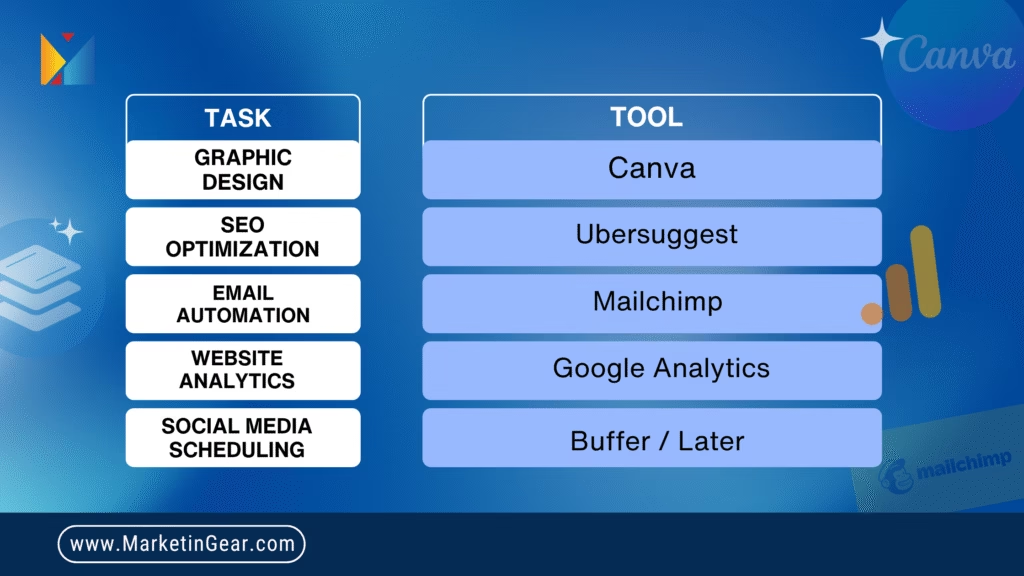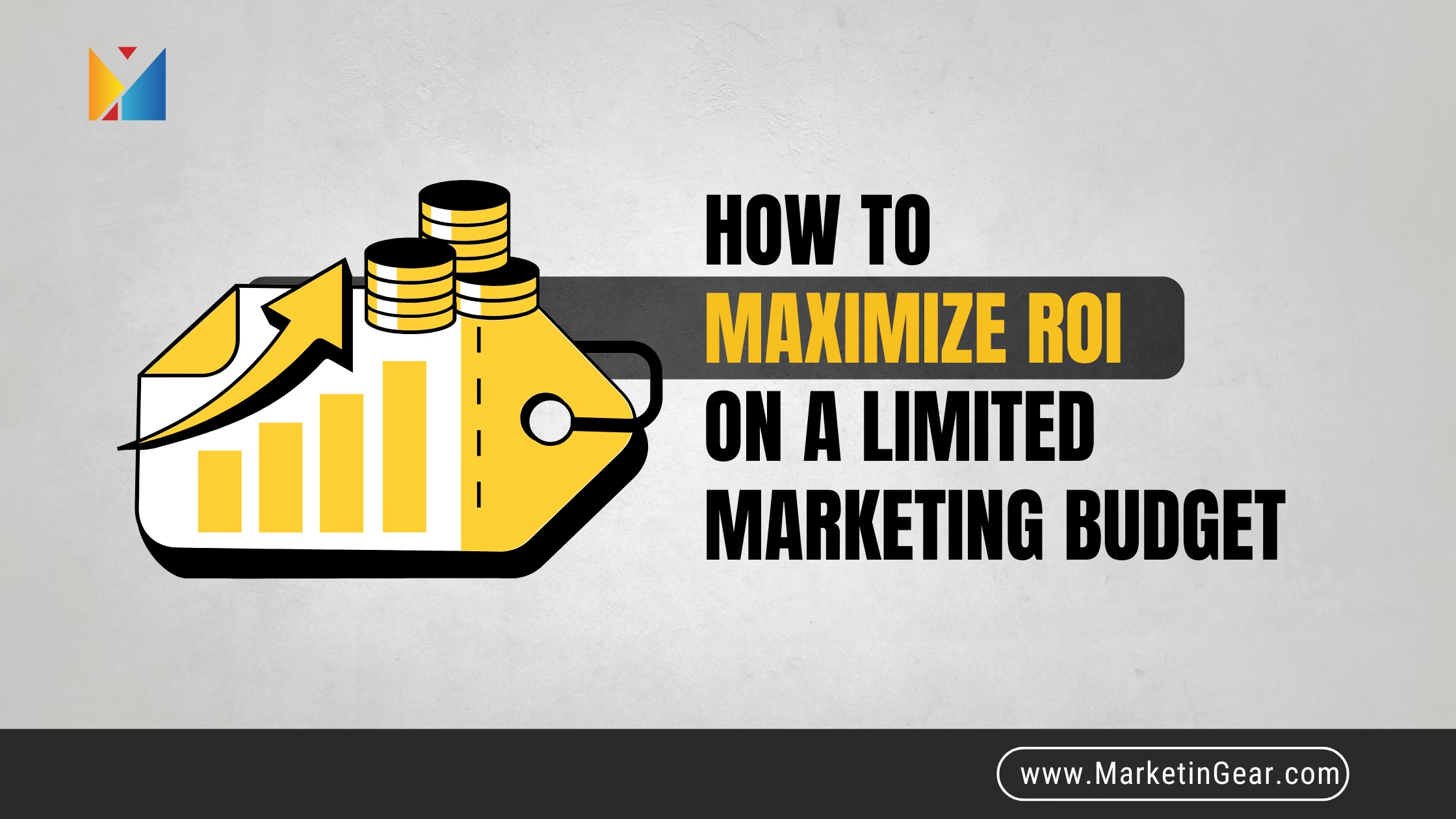Introduction: Big Results, Small Wallet? Yes, It’s Possible
Imagine you’re running a small cafe. You’ve got great coffee, friendly staff, and the perfect cozy vibe. But no one’s walking in. You think, “Maybe I should market.” Then you look at your budget and sigh. Sound familiar?
Marketing doesn’t need to burn a hole in your pocket. In fact, with a little creativity and the right strategy, small businesses can stretch every marketing dollar to deliver real, measurable results. That’s what this guide is all about: helping you maximize marketing ROI—even on a shoestring budget.
We’ll walk you through key strategies, real-world examples, and simple tools that won’t cost a fortune but will return big value. Because at the end of the day, it’s not about how much you spend—it’s about how smart you are with the money you do have.
1. Start With the Basics: What Is Marketing ROI?
Marketing ROI (Return on Investment) tells you how much profit you’re getting from your marketing activities. In simple terms:
ROI = (Revenue from Marketing – Marketing Cost) ÷ Marketing Cost
It’s like asking: *”For every $1 I spend, how much do I get back?”
If you’re not tracking this, you’re flying blind. Before doing anything else, you need to start measuring your marketing effectiveness using:
- Website traffic vs conversions
- Email open and click rates
- Cost per lead (CPL)
- Customer acquisition cost (CAC)
- Revenue per campaign
Tracking these metrics helps you understand what’s working and what’s not. This way, every decision becomes informed and ROI-focused.
Use free tools like Google Analytics, Mailchimp Reports, or HubSpot Dashboards to track your numbers.
2. Focus on High-ROI Digital Channels
You don’t need to be everywhere. You just need to be where your audience is — and where your budget works hardest. Here are some cost-effective marketing techniques that deliver solid ROI:
a. Email Marketing (ROI up to 4200%)
One email can sell more than a billboard. Use email nurture sequences to guide leads down the funnel. Email is personal, direct, and easy to automate.
Tips:
- Use free tools like Mailchimp
- Automate welcome emails
- Segment your audience
- Offer value: guides, discounts, insider tips
Even just one well-timed email can turn a browser into a buyer.
b. SEO: Organic Doesn’t Mean Optional
Local SEO brings in high-intent traffic without paying for clicks. Optimize your website, Google Business Profile, and blog content with relevant keywords. A one-time effort can bring in ongoing leads.
Low-cost tips:
- Use tools like Ubersuggest for keyword ideas
- Add location-specific content (e.g., “Marketing ROI for Sacramento Cafes”)
- Write helpful blogs answering your customers’ questions
c. Social Media Marketing (Budget-Friendly Virality)
Don’t underestimate the power of organic reach strategies on platforms like Instagram, Facebook, and TikTok.
Smart moves:
- Post reels and carousels regularly
- Use trending sounds
- Respond to comments fast
- Run small-budget ad tests ($5–$20/day)
A single viral post can do the work of thousands in ad spend.
3. Build a Lean, ROI-Driven Marketing Plan
Your plan should be as lean as your wallet. A budget-friendly marketing plan avoids waste and prioritizes actions that drive results.
Step-by-step formula:
- Set SMART goals (e.g., “Get 50 new email subscribers in 30 days”)
- Pick 2–3 channels only
- Allocate budget by ROI potential
- Track weekly results
- Cut what doesn’t work. Scale what does.
The leaner the plan, the easier it is to test and adapt. This nimbleness gives small businesses a huge edge over slower-moving giants.
Use a simple spreadsheet to plan and track your budget. There’s no need for fancy tools when Excel or Google Sheets work just fine.
4. Use Free or Low-Cost Tools (Your Budget’s Best Friend)
Why pay when you don’t have to? There are amazing free digital marketing tools that can help you grow and compete with big players.

Even just two or three of these tools can dramatically improve your output, consistency, and professionalism.
And remember: automation increases ROI by reducing manual work. Even a simple email autoresponder saves time and sells more.
5. Tap into Local and Organic Power
Small businesses often overlook the gold in their own backyard. Use affordable marketing ideas that bring you visibility without digital spend.
a. Community Engagement
- Join local Facebook groups
- Sponsor school events
- Partner with other small businesses
- Hand out branded flyers and coupons
- Host or attend local fairs
It builds goodwill, trust, and often gets you more exposure than expensive online ads.
b. Referral & Loyalty Programs
Happy customers are your best marketers.
Ideas:
- Give 10% off for every referral
- Create punch cards (Buy 5, Get 1 Free)
- Shout out loyal customers on social media
These old-school tactics still work wonders when executed right.
6. Run Small Campaigns — But Track Every Penny
If you do invest in ads, make them ROI-driven marketing campaigns. This means tracking every click, every conversion, and every dollar returned.
What to track:
- Cost per click (CPC)
- Conversion rates
- Revenue per ad
💡 Try A/B testing your landing pages, offers, and headlines — even on low spend.
Examples of budget-friendly campaigns:
- $10 Instagram story ad promoting a weekend flash sale
- $25 Facebook ad for email signup with a lead magnet
- $50 Google Ads campaign targeting a hyperlocal keyword
Track everything. If it works, double down. If it doesn’t, learn and adjust.
7. Repurpose and Recycle Your Content
Content takes time, so squeeze every drop of value from it. This is one of the best low-cost high-ROI strategies you can adopt.
Ways to repurpose:
- Turn blog posts into reels, tweets, or infographics
- Turn webinars into YouTube clips
- Compile email tips into an ebook
- Use customer reviews as social proof in ads
This multiplies your output without multiplying your workload.
You don’t need to create more. You need to create smarter.
8. Real Stories, Real ROI: Case Studies That Prove It Works
Case Study: The $80 Campaign That Brought $3,200 in Revenue
A local flower shop ran a $20/week Google Ad targeting “Valentine’s Day Roses Near Me.” In 4 weeks, they made over $3,000 in pre-orders. They tracked ROI through call tracking and landing page form fills. Smart targeting, emotional timing, and clear offers did the trick.
Case Study: From 0 to 500 Subscribers in 3 Weeks
A solo fitness coach offered a free meal plan PDF in exchange for email signups. Using Canva, Mailchimp, and a $30 Instagram boost, she built a solid mailing list — which she then monetized through personal coaching offers.
Both examples show that ROI isn’t about the size of the spend. It’s about smart, focused execution.
Conclusion: Don’t Spend More. Spend Smarter.
You don’t need a fat wallet to market like a pro — you need a smart plan, solid strategy, and ROI mindset. Focus on what works. Track everything. Cut waste. Grow steadily.When your dollars are limited, your ideas have to be limitless. That’s where MarketinGear comes in — we specialize in helping small businesses maximize ROI with affordable, done-for-you marketing solutions.




